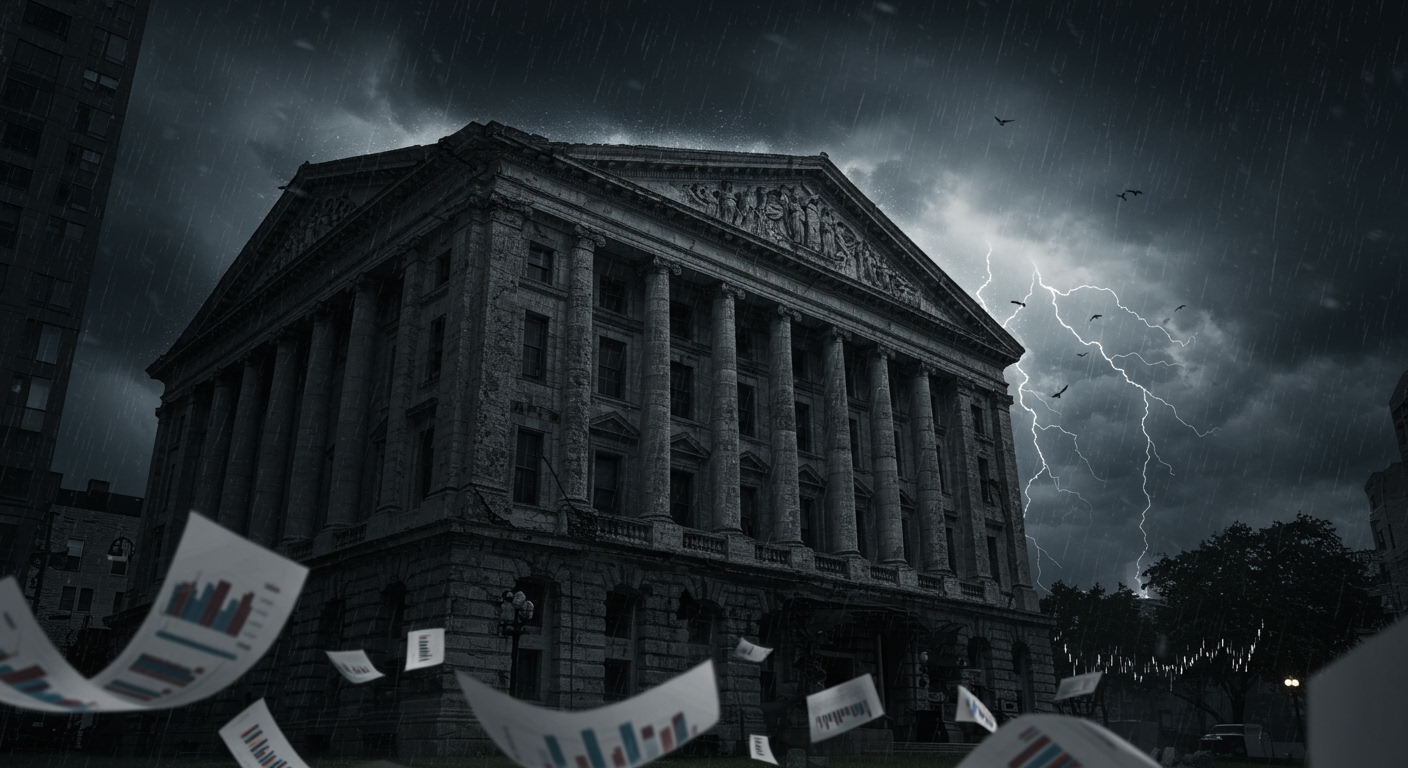Illinois continues to grapple with a formidable and seemingly intractable pension burden, a financial challenge that persists despite years of concentrated effort and substantial taxpayer contributions. While Governor JB Pritzker has garnered praise for stabilizing state finances and securing multiple credit rating upgrades, the state’s massive unfunded pension liabilities remain a significant and enduring concern, casting a shadow over his administration’s otherwise lauded fiscal achievements.
The Alarming Scale of the Debt
As of June 30, 2024, Illinois’ unfunded statewide public pension liabilities stood at nearly $144 billion, a figure that reflects a slight increase from the previous year. This substantial debt highlights the deep-seated nature of the crisis. While the funded ratio of the state’s five main pension systems saw a modest uptick to 46.1% from 44.6% in 2023, this remains far below the 80% threshold considered healthy by the United States Government Accountability Office (GAO). In fact, Illinois consistently ranks among the states with the worst-funded pension systems in the nation. This grim financial News is particularly stark when considering that a significant portion of the state’s annual contributions, projected at nearly $12 billion in fiscal year 2026, is allocated to servicing accumulated debt rather than funding current worker benefits.
Pritzker’s Fiscal Record: A Mixed Verdict
Governor Pritzker has undeniably achieved notable successes in strengthening Illinois’ overall fiscal health. His administration has overseen the passage of multiple balanced budgets and implemented disciplined financial management practices. This fiscal progress has been acknowledged by major credit rating agencies, with Illinois receiving an impressive nine credit upgrades in just over two years, moving the state back into the ‘A’ category across S&P Global Ratings, Fitch Ratings, and Moody’s Investors Service. These upgrades signify increased investor confidence and translate into millions saved in interest payments for Illinois taxpayers. The governor has actively utilized budget surpluses to make additional contributions to the pension systems and signed legislation to pay down various state debts, including a $4.1 billion payment that reduced liabilities for health insurance, college programs, and pensions.
However, the persistent pension crisis presents a formidable counterpoint to these achievements. Critics argue that while the state may no longer be exacerbating the problem at the same rate, it is far from resolving the extensive debt. Illinois’ pension debt as a share of personal income stands as one of the highest in the nation, indicating the immense burden on residents.
A History of Underfunding and Failed Reforms
The roots of Illinois’ pension predicament stretch back decades. The “Edgar Ramp,” established in 1994 under Governor Jim Edgar, aimed to achieve a 90% funded ratio by 2045. However, a history of insufficient contributions, often termed “pension holidays,” and overly optimistic actuarial assumptions prevented the state from meeting these targets. Investment losses during economic downturns, such as the 2008 financial crisis, further deepened the hole. Attempts at significant reform, like the 2013 pension reform bill that sought to reduce cost-of-living increases and raise retirement ages, were ultimately struck down by the Illinois Supreme Court, citing the state’s constitutional pension protection clause. This clause severely limits the state’s ability to unilaterally modify benefits for current and retired public employees.
Navigating Current Strategies and Future Challenges
Pritzker’s administration has continued to explore avenues for managing the debt. This includes extending pension buyout options for state employees and proposing to modify the “pension ramp” by extending the funding deadline to 2048 and increasing the target to 100% funding. A major current focus, highlighted in recent Editorial discussions, involves addressing the Tier 2 pension system, implemented in 2010 for new hires with less generous benefits. Concerns that Tier 2 benefits might fall below federal Social Security “Safe Harbor” provisions necessitate adjustments, which Pritzker has acknowledged will come with increased costs. His fiscal year 2026 budget proposes changes to Tier 2 that could result in a $13 billion pension benefit boost for newer employees over time, adding to the state’s long-term liabilities, with an initial cost of $78 million in FY2026 alone.
The Burden Extends to Chicago and Beyond
The pension crisis isn’t confined to state-level systems. Municipalities, including the city of Chicago, face their own substantial pension shortfalls. Chicago’s pension debt, for its four employee funds (police, firefighters, municipal employees, and laborers), was approximately $35.9 billion in 2024. This figure has seen a slight decrease for the first time in five years, driven by increased asset values. However, recent state legislation boosting pension benefits for Chicago’s first responders is projected to add an additional $11-15 billion to the city’s liabilities, threatening to negate recent progress and potentially leading to further credit rating downgrades for the city. This particular piece of News underscores the interconnectedness of state and local fiscal health.
The Call for Systemic Reform
Experts and watchdog groups consistently emphasize that Illinois cannot rely solely on robust investment returns or temporary budget surpluses to resolve its pension crisis. The continuous climb in taxpayer contributions, which have soared almost twenty-fold in three decades, crowds out funding for essential services like education and public safety. Without deeper, systemic reforms, the sheer magnitude of the unfunded liabilities will continue to strain the state budget and its residents. The challenge for Governor Pritzker and future leaders lies in finding politically feasible solutions that respect constitutional protections while putting Illinois on a truly sustainable financial path, an ongoing saga that defines much of the state’s fiscal narrative.














